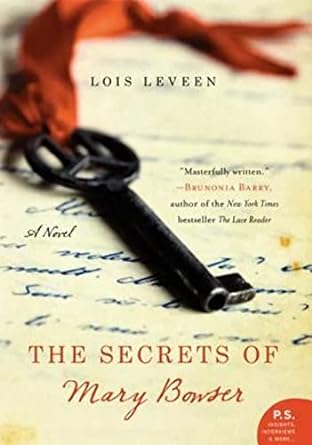Mary Elizabeth Bowser
Mary appears at various times and places in historical records under at least seven different names, including Mary Jane Richards, Mary Jane Henley, Mary Jones, Richmonia Richards, Richmonia R. St. Pierre, Mary J.R. Garvin, and Mary J. Denman.
“Even knowing how to refer to the real figure can be a challenge because this woman used a variety of different first and last names throughout her life. For many formerly enslaved people, including Frederick Douglass, Harriet Tubman, and Sojourner Truth, self-naming was an important way to assert their full personhood.” -Lois Leveen
Born into slavery sometime around 1840 in Richmond, Virginia to the Van Lew family, Mary Jane was likely briefly married to a man named Wilson Bowser, although only his surname, not hers, appears in the 1861 church records.
Mary endured the hardships of bondage, yet her intellect and determination set her apart from her peers. Upon the death of her father and recognizing Mary's intelligence, Elizabeth Van Lew (Union sympathizer who operated a spy ring), freed Mary and sent her North to be educated. Education was an exceptionally rare opportunity for a slave in the pre-war South.
The Van Lew family later expatriated her. Richards name appears in the records of the American Colonization Society among a group of Black Virginians bound for Liberia. Richards wrote back to the Van Lew family of her dissatisfaction with conditions there, and the Van Lews paid her passage to return to Virginia in 1860. Mary Jane Richards returned by ship to Baltimore, and from there she traveled to back to Richmond, Virginia. Virginia law forbade African Americans from entering the state and by returning to Virginia, Richards was breaking the law.
Mary was arrested in Richmond for "perambulating the streets claiming to be a free woman of color."
If she were set fee, she could have, under Virginia law, been sold into slavery for the crime of having entered the state. Instead, Elizabeth Van Lew told the court that Richards was their slave and she could legally be released into their custody. Richards left jail and Van Lew paid a ten dollar fine for “permitting her slave, Mary Jane, to go at large.”
During the war, Mary operated undercover in the heart of the Confederate capital. However, specific details of her efforts are unknown and much of what is written about Mary is likely embellished and invented.
In 1911, fifty years after the start of the Civil War, Annie Van Lew Hall was interviewed for a story in Harper’s Magazine. She told the publication that as a child, she had known an African American woman named “Mary Elizabeth Bowser” who was a spy during the war, working in the home of Confederate President Jefferson Davis and secretly gathering information there. The story became the stuff of Civil War legend as it was repeated and embellished over the next century. The basis of Hall’s story was true: her aunt, Elizabeth Van Lew, did operate an espionage ring in the Confederate capital, and an African American woman named Mary was a part of it.
Mary Jane Richards gave two public speeches at churches in Harlem and Brooklyn. In both instances, she used a pseudonym, calling herself first “Richmonia Richards,” and then “Richmonia R. St Pierre,” and thrilled New York audiences with her narrative of being a spy in the Confederate capital and her strong opinions about politics and current events.
In her remarks recorded in the Anglo African, Richards comes closest to the imagined narrative of "Mary Elizabeth Bowser" in the Harper's story of 1911 by claiming to have entered - one time - the home of Confederate president Jefferson Davis. The Anglo African's reporter recorded Richards saying "she went into President Davis’s house while he was absent, seeking for washing, and while there was conducted into a private office by one of the clerks, when she opened the drawers of a cabinet and scrutinized the papers. While thus employed Jeff. came in and inquired of her what she was doing there, but considering she was colored allowed her to go in peace."
You can read the full text of the newspaper stories recounting her speeches here:
RICHMONIA RICHARDS in the NEW YORK ANGLO-AFRICAN, October 7, 1865
RICHMONIA R. ST. PIERRE in the BROOKLYN DAILY EAGLE, September 25, 1865
Lois Leveen wrote a novel based on historical rumors that Bowser served as a spy at the Confederate White House in The Secrets of Mary Bowser, published in 2012. One of two inaugural Cokie Roberts Women’s History Fellows, Lois spent spring 2022 at the National Archives at Washington, DC, researching the history. This time Leveen’s research will culminate in a nonfiction work, a biography that uses Bowser’s life to reveal a more expansive hidden history of Black activism during the Civil War and Reconstruction eras.



